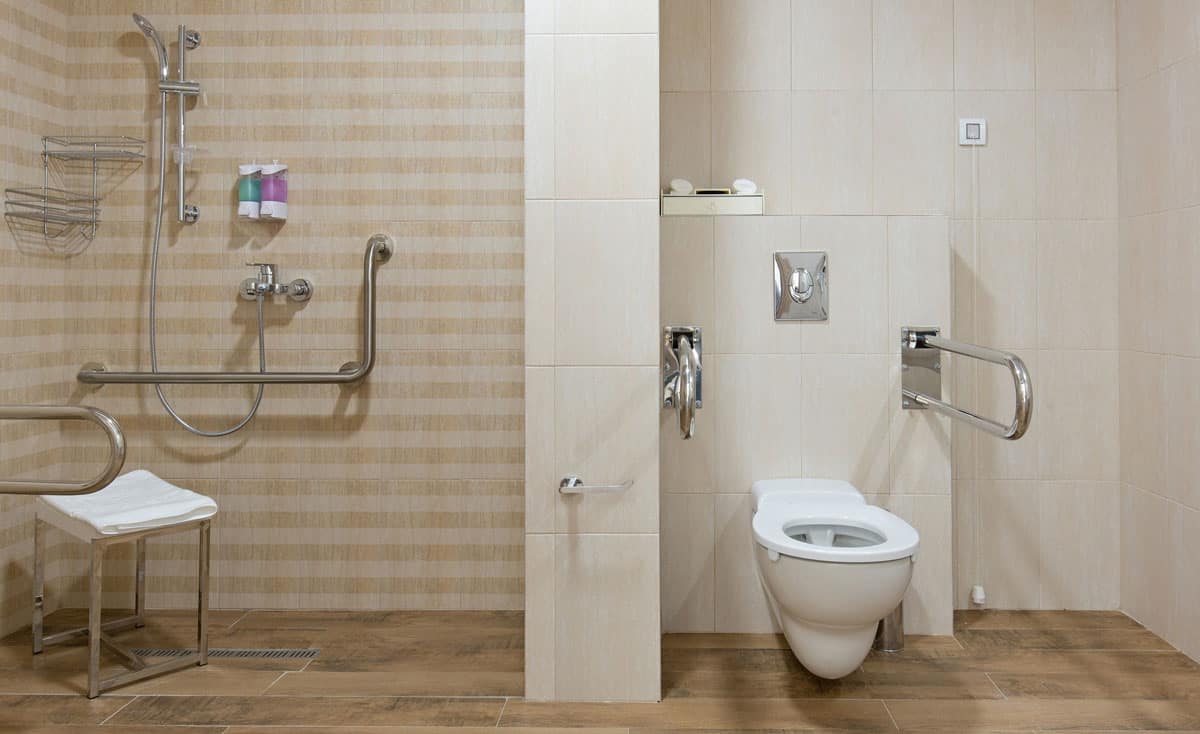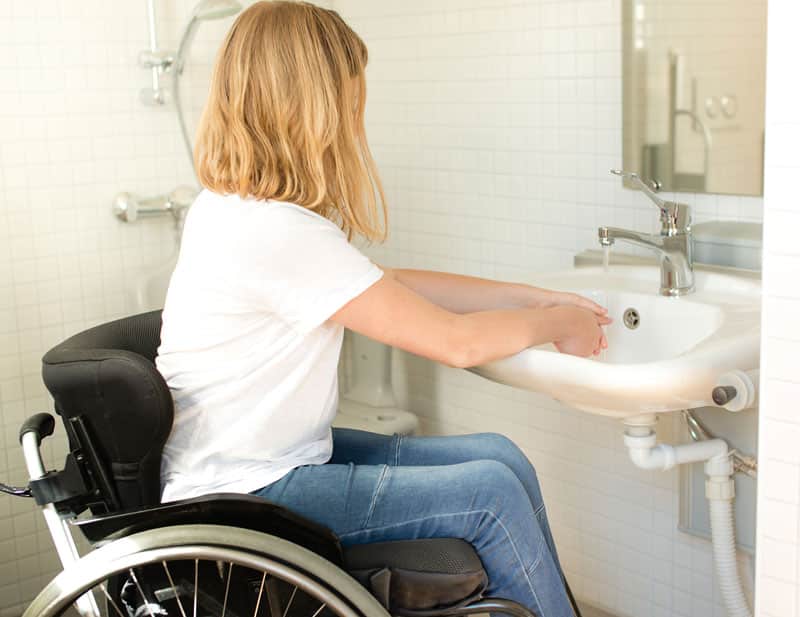The bathroom can be one of the most difficult and dangerous places to move around in when faced with limited mobility in your home. However, there are a few ways in which you can make your bathroom more accessible and provide a safer, more independent experience for you or your loved ones.
Install Rails And Grab Handles
Installing rails and grab handles for someone with limited mobility to easily hold on to is one of the easiest ways to make your bathroom more accessible. Some useful places to have these installed include next to the toilet, in the shower, and throughout the length of the bathroom. This way, rails make it easier and safer for everyone to move around wet surfaces and navigate risky obstacles.
Grab-handles, on the other hand, allow for a steady support to hold on to when sitting down and standing up, so placing them right next to the toilet and the shower is very useful.
Slip-Free Flooring
The bathrooms’ wet surfaces can be highly dangerous for seniors or anyone else with limited mobility, so installing slip-free flooring is necessary when trying to make your bathroom more accessible.
Walk In Showers/Bathtubs

A walk-in shower provides an easy entrance and ample room for maneuvering, with the additional option for wheelchair users to enter the shower without leaving their chair. This accommodation also leaves greater room for caregivers to provide support.
For people able to bathe on their own, a height adjustable or walk-in bath can be used just like any conventional bath by having it lowered to make it easier to get in and out of, while a walk-in shower avoids having to step up. If standing in the shower is not a possibility, then including a seat is mandatory. You can choose from a free standing seat that can be removed when not in use or a wall-mounted chair that can be folded against the wall when someone else is taking a shower.
The location of the shower controls and showerhead should be taken into consideration since having them on the side can be easier to reach from a seated position. Other features, such as a shower curtain, screen, or long hose that can easily reach all parts of the body can be useful when the person needs a carer’s assistance.
Sink And Wash Basin
People using a wheelchair may find it easier to have the sink placed right next to the toilet so that they can wash their hands while still seated. However, regardless if this is possible or not, the appropriate height for the wash basin needs to be considered, as it should be easily reachable for the person in the wheelchair and also have enough room underneath it to fit their legs.
Sensory Bathroom Design
Although these types of modifications are often overlooked, they can be useful for people with certain disabilities. Different colored flooring can be joined together to define different areas. The use of contrasting colours on the floor and walls can help a vision impaired person better distinguish the shower area, allowing them greater independence. On the other hand, a lever tap can be easier to operate than a knob, and a flush pad or soft-touch pad that only requires little pressure to trigger can facilitate bathroom use for many.
While everyone’s necessities are different, there are many ways in which you can make your bathroom more accessible. Although these tips provide a good starting point, it will always be best to consult with a specialist about the type of particular aids you or your loved one will find most useful. The bathroom doesn’t have to be a complicated and dangerous place for those with limited mobility if you take the necessary steps to make it more accessible.

 p-t0">
p-t0">